#vidugavia
Text
Hot take—I was looking back at Appendix A again, and Gondor really hit the ally lottery with the Northmen/Rohirrim because I’m not sure I would have put up with Gondor early on if I was a Northman myself. The whole relationship between the two kingdoms only started because Gondor was looking for a buffer between themselves and the Easterlings (“hey, let’s use these blonde guys as a human shield for our own protection!”). Then when individual Northmen distinguished themselves and got a foothold in Gondorian society, the “high men” (ugh) of Gondor “looked askance” at them as a “lesser and alien race” (double ugh). And when King Valacar of Gondor married the daughter of the Northman King Vidugavia, the Gondorians FOUGHT A CIVIL WAR rather than willingly accept Valacar’s totally legitimate half-Northman son and heir as their leader. Just exhausting.
Relationships between countries are never uncomplicated, and some people in Gondor were always accepting and respectful of the Northmen. And over time, Gondor as a whole proved itself as useful and loyal to the Northmen/Rohan as the reverse. The alliance between the two is so incredible in its fully developed form, and Gondor and Rohan as little best buddy nations are so sweet. But how lucky that Vidugavia’s people didn’t watch that civil war way back in the Second Age and just think to themselves, “to hell with this.”*
* I say this as a citizen of a country that is frequently an overbearing bully to its own best buddy nations (Sorry, Canada! Every American loves you!), and I’m constantly grateful that they haven’t all just decided to write us off for good!
#hot takes#lotr#lord of the rings#tolkien#rohan#gondor#northmen#vidugavia#if you’re fighting a war rather than accept my grandson as rightful king#then we’re gonna have problems
65 notes
·
View notes
Text
hmm ok it’s come to my attention that I should probably give you all a crash course in who Eldacar actually WAS. buckle up! this is my favourite story from the LoTR appendices.
So! The year is Third Age 1250. Rómendacil of Gondor is the regent for his uncle (and later also for his father) the king, who is an indolent and altogether useless guy. Rómendacil’s main concern is the land of Rhovanion, to the North of Gondor, where he has recently fought off an invasion of Easterlings with the help of this guy Vidugavia who now calls himself the King of Rhovanion and rules the people known as the Northmen. Cool cool cool, thinks Rómendacil, who obviously has a lot on his plate with his useless uncle whose country he’s running. So he sends his son Valacar north as an ambassador to Rhovanion, to serve in their army, learn their culture and all-around strengthen the alliance.
Valacar misunderstands the assignment and falls in love with Vidugavia’s daughter, Vidumavi.
Now the Northmen are all very good as allies, but this simply won’t do! After all, Valacar is a high-blooded Númenorean, with a long long lifespan and all the other gifts that come with being one of the Men of the West, and Vidumavi, although fair and noble, is just of lesser race. The people of Gondor are not impressed. (The people of Gondor are racist.) And Valacar has even had a son with Vidumavi! His name is Vinitharya in the language of the Northmen, but when Valacar brings his little family back to Osgiliath (then Gondor’s capital city) five years later, he gives his son the Quenya name Eldacar instead. If he was hoping that would quell the mutterings, it doesn’t. The racists of Gondor are not pleased that the heir to the throne is of “lesser race” and complain a lot that he won’t live as long as his father.
A lot of time passes. Rómendacil becomes King and dies, Vidumavi dies (at a very advanced age), Valacar becomes King and eventually dies. Eldacar becomes King aged 177 and the unrest almost immediately breaks out into full-scale rebellion and the civil war called the Kin-strife – especially in the coastal south of Gondor, and the harbour cities of Umbar and Pelargir.
Eventually Eldacar’s second cousin Castamir, who is the Captain of Ships of Gondor and also The Worst, decides to seize the throne from Eldacar, an event known as the Usurpation of Castamir. He besieges Eldacar in Osgiliath and sacks the city, leading to (among other things) the destruction of the great hall called the Dome of Stars and the loss in the River Anduin of the palantír of Osgiliath, which was the greatest of the seven seeing-stones brought by Elendil from Númenor. Thanks, Castamir! Anyway Eldacar fights valiantly (Eldacar is very valiant. the texts says so explicitly I’m not just saying this because he’s my blorbo) but Castamir manages to force him out of Osgiliath and claim the throne for himself. Eldacar flees north to Rhovanion, but Castamir has captured Eldacar’s eldest son Ornendil and cruelly puts him to death which is :( really sad :(
Anyway turns out that backfires on Castamir because the people of Gondor quickly realise what we already know, i.e. that Castamir is The Worst. They aren’t fans of the unnecessarily brutal sack of Osgiliath and the execution of poor Ornendil. Castamir is obsessed with ships and fleets and whatnot and does a generally poor job of ruling. Also he wants to move the seat of the King from Osgiliath to Pelargir, a proposal nobody in the north of Gondor likes.
Ten years later! Our bestest boy Eldacar has not been idle. He puts together an alliance with his mother’s kinsfolk in Rhovanion and also the people in the north of Gondor who hate Castamir, marches back to Gondor with a huge army, has a giant battle, and personally kills Castamir to avenge his son which is so fucking cool.
Anyway the tone of the narrative in the appendices then takes a slightly weird turn by noting that much of the “best blood” of Gondor was lost in that battle and had to be “replenished” with “lesser Men” from Rhovanion to which I say: good. They sound like they had their heads screwed on more tightly than the idiots always mooning over Númenor and Númenor’s gifts and Númenor’s glory like. your place DROWNED over a THOUSAND YEARS AGO. get over yourselves. Anyway.
The Kin-strife has huge consequences for the history of Gondor as a whole – Castamir’s sons survived and established a lordship of their own at Umbar, which remained at intermittent war with Gondor literally until the time of Aragorn 1500 years later. But Eldacar’s story has a happy-ish ending! He lived to be 235, proving that all the racists did not in fact have any idea what they were talking about. As you’d expect, for racists. Eventually he was succeeded as King by his younger son, Aldamir.
The end! Go and have a read of the LoTR appendices seriously. They’re imo a lot more accessible than the silm in writing style, and really really interesting! And for the love of everything holy vote Eldacar on June 1st please and thank you :)
#lotr#meta#my meta#eldacar#might as well also tag this#otb propaganda#anyway hope that was a comprehensive history lesson for the uninformed! my boy is so important actually#drop me an ask if anything was unclear I genuinely love kinstrife discussions
51 notes
·
View notes
Text
Favourite Female Tolkien Character Poll - Round 1, Match 28
There are three polls today, all featuring women of Gondor and Arnor!
Berúthiel
A queen of Gondor remembered for her cats. From a note in Unfinished Tales:
She was the nefarious, solitary, and loveless wife of Tarannon, twelfth King of Gondor and first of the ‘ship-kings,’ who took the crown in the name of Falastur (‘Lord of the Coasts’), and was the first childless king. Berúthiel lived in the King’s House in Osgiliath, hating the sounds and smells of the sea and the house that Tarannon built below Pelargir ‘upon arches whose feet stood deep in the wide waters of Ethir Anduin’; she hated all making, all colours and elaborate adornment, wearing only black and silver and living in bare chambers, and the gardens of the house in Osgiliath were filled with tormented sculptures beneath cypresses and yews.
She had nine black cats and one white [my note: sonehow this feels like a metaphor/imagery for Sauron and the Ringwraiths], her slaves, with whom she conversed, or read their memories, setting them to discover all the dark secrets of Gondor, so that she knew those things ‘that men wish most to keep hidden’, setting the white cat to spy on the black, and tormenting them. No man in Gondor dared to touch them; all were afraid of them, and cursed when they saw them pass.
…her name was erased from the Book of the Kings…and King Tarannon had her set on a ship alone with her cats and set adrift on the sea before a north wind. The ship was last seen flying past Umbar under a sickle moon, with a cat at the masthead and another as a figure-head on the prow.
Vidumavi
She married Valacar prince of Gondor and their son was Eldacar (if you followed the Obscure Tolkien Blorbo poll tournament, you may have heard of him).
Gondor had sought good relations with the Northmen, who lived the plains surrounding the south of Greenwood the Great. King Rómendacil II of Gondor sent his son Valacar to live for a while with Vidugavia, the king or chieftain of lands east of southern Greenwood. Valacar went further than he expected in marrying Vidugavia’s daughter Vidumavi. People in Gondor did not like this, regarding the Northmen as lesser than them, and fearing that intermarriage would make their descendents shorter-lived. After Vidumavi’s death, when Eldacar became king, there was a rebellion and civil war called the Kin-strife, in which Eldacar was ultimately victorious.
#favourite female tolkien character poll#queen beruthiel#vidumavi#gondor#the lord of the rings#unfinished tales#tolkien
19 notes
·
View notes
Text

My OC Eloise Vidugavia Gilimaitë (Ellie) (she/her), she is an elf and is 70 y/o (18~ in human years)
#doodle#drawing#digital art#art#drawing figure#dungeons and dragons#artwork#artists on tumblr#my art#art tag#art style#illustration#illust#sketch#sketches#adobe#adobe fresco
7 notes
·
View notes
Text
Also - I’m really obsessed with Harad lately and I’m trying to sketch out some internal politics to use across my writing. Just some thoughts for anyone who might be interested:
Sometime after the year 1250 of the Third Age, Rómendacil, nineteenth King of Gondor, sent his son Valacar north to act as an emissary to the King of Rhovanion. The King of Rhovanion was what could generously be called a tenuous title - the Northmen had rarely had permanent settlements, and tended to smaller nomadic groups rather than singular kingdoms. Nevertheless, one prince, Vidugavia, had taken to calling himself the King of Rhovanion, and after the substantial aid he supplied to Gondor in her fight against the Easterlings, his claim could not be casually dismissed. Valacar was therefore sent north, and there met and wed Vidugavia’s daughter Vidumavi, who bore him a son, named Eldacar.
Theoretically, no problem, except that the Northmen had never travelled to Númenor, did not participate in the war against Morgoth, and were therefore not availed of a longer lifespan. Upon Valacar’s return to Gondor and his ascension to the throne, there was much worry about the lesser blood status of his wife and son, and fear that the lengthened lifespan of the Kings of Gondor would be lessened by this blood mixing (yup).
When Valacar died and Eldacar prepared to take the throne, full blown civil war broke out. This is known as the Kin-strife. Eldacar, who dwelt in Osgiliath, was chased out of the city and kingdom (fleeing to Rhovanion), and a man named Castamir took the throne, executing Eldacar’s son.
Eventually Eldacar retook control of Gondor and had Castamir put to death, but Castamir’s sons successfully fled to Umbar, making that city a safe haven for all enemies of the King of Gondor.
By 2885 of the Third Age, Umbar - though ostensibly an independent city-state - supported Harad’s claim over the Gondorian realm of Harondor, which had at least once been named a land under dual claim between Gondor and Umbar. This, combined with other military allegiances between the Corsairs and the Haradrim, suggests an especially close relationship, and any extant divisions would have certainly been even more blurred by the time Sauron claimed dominion over them both.
So - we know that Castamir’s sons were instrumental in setting up Umbar as an antagonist to Gondor, but we don’t know how many sons Castamir had or if they all remained in Umbar.
We also know a few other things:
Castamir’s great-grandsons named themselves using Quenya (Sangahyando and Angamaitë) - this doesn’t imply a popular Umbarian usage of Quenya, but does suggest that Quenya itself was not a shunned language in Umbar, at least in TA 1630.
Gandalf’s name in Near Harad was Incánus, which was, despite several changes in gloss, almost always marked out by Tolkien as a Quenya term. So the Haradrim were also using variants of Quenya in the Third Age - which makes sense, because the Haradrim were actually colonised and oppressed by the Númenóreans in and after the reign of Tar-Ciryatan.
Given all that, I suggest the following recent history for Harad:
After the fall of the last descendants of Castamir in TA 1810, the tribes of Harad were dispersed, largely leaderless and prone to violent conflict with one another. Although there were myriad groups with myriad political allegiances and traditions, most could be grouped into one of two meta-traditions.
The first, comprising those tribes who were dominated by descendants of the Black Númenóreans and the Castamirionath, situated their opposition to Gondor in terms of the illegitimacy of its rulership. They hold that Eldacar’s return was illegitimate (as Castamir was the rightful king), and therefore all of Eldacar’s descendants, and the Ruling Stewards as empowered by Pelendur (through heritability), were false kings. Their interest lays in reunifying and strengthening Harad to reclaim Gondor and instal the rightful line of Kings.
The second, comprising those tribes of the “original” Haradrim - those who came direct from Hildórien and never continued to Númenor - who were suppressed during the rule of the Black Númenóreans and later during the rule of Castamir’s sons, have historically had no interest in the unification of Harad, and no interest in paying fealty to those who seek to invade and “reclaim” Gondor. Their hatred of Gondor is situated in their profound distaste of the Númenórean descendants as, essentially, imperialists and colonisers.
In TA 2036, they were all forcibly unified under one ruler, who invoked the name of Castamir and violently suppressed those tribes who opposed him. For eight hundred years the various tributes of Harad existed in something approaching peace, though it was a peace enforced with whips and chains. After the Battle of the Crossings of Poros in TA2885, the Castamiric rulers lost control of several substantial parts of Far Harad, and tightened their grip on the rest of Near Harad.
Ten years before the Ring War, a prince of the tribes of Far Harad began to declare that all the ills of the Haradrim were the ills of Númenor, that Gondor, as its heir, was a craven den of immorality, cruelty, and tyranny. He began to siphon off the tribes of Near Harad, turning those who supported the memory of Castamir against those who did not. In attempt to bring the Far Haradi tribesmen in line, the chieftain of the Near Haradi tribes (the Castamirite) sent his youngest child, a daughter away to marry the Far Haradi firebrand.
During the Ring War, they were effectively unified under Sauron’s banner - the Near Haradrim having been promised dominion over Gondor, and the Far Haradrim having been promised liberation from Near Harad. They were each handily defeated during the War, leaving Harad in ruination.
The sole son and heir of the Near Haradi leader died at the Pelennor Fields, leaving the Near Haradi Castarmirites without a future ruler. His daughter’s son would, therefore, be heir to both tribes, effectively forcing reunification. But her husband laid siege to her father’s lands, leaving Far Harad open to attack by the even more easterly Variags, who were pushed west by devastating droughts in the east.
And that, I think, basically gets me to the years that I’m interested in writing about.
#harad#e writes#basically im v keen on doing an anti-imperialist arc somewhere#but correctly identifying the númenóreans as the imperialists#and essentially putting Tolkien’s “queen among queens’ maxim to the rest#which is especially interesting in the context of Faramir imo#both as the character who delivers that quote#but as someone who - like Valacar - also married someone of a ‘lesser’ race#and of course was also knocked tf out by a haradi arrow
12 notes
·
View notes
Note
Prompt: Rhovanion & shadows of things that were yet to be
Hiii thank you <3 I understood rhovanion to imply my favourite niche family
(Names: Vinitharya = Eldacar, Minalcar = Romendacil II, Meligavi = Eldacar's canonical but unnamed sibling)
The messenger had been formally received with the same ceremonials as all of his kind who had made the journey from the far south over the last decade. He had come with greetings from one king to another and a stack of letters: for Vidugavia, for his son-in-law and his daughter. There had even been a small, cloth-wrapped package for his grandchildren that revealed finely made toys and a bag of dried figs and peaches.
Nothing had seemed out of the ordinary, but Vidugavia had taken note of a line of tension in Valacar’s face and a guarded look in his eyes as he watched the messenger approach. He had searched for a similar reaction in his daughter, but Vidumavi had been preoccupied with the bored and restless toddler on her hip, her face turned away and half-obscured by her hair.
Minalcar’s letter had offered nothing save for the usual diplomatic pleasantries and goings-on when Vidugavia had opened it that evening, but over the following weeks, he watched a strain grow in the bearing of his daughter and his law-son. They tried to keep their whispered arguments away from their children, he knew, but little Vinitharya, five years old now, was precocious and disposed to listening at doors. He soon lost interest in the beautiful, detailed model of a ship that had been gifted to him and began to look sullen and hide when he was called for.
Vidugavia had known this day would come, but foolish, soft old man that he had become, he had hoped he would not live to see it, that he might die surrounded by all his children and grandchildren. But it seemed Minalcar, who had after Vinitharya’s birth tentatively begun hinting that Valacar might best serve the realm in Gondor now, had finally lost his patience for good.
Vidugavia had some inkling of the stern conventions that ruled over an empire like Gondor, over its ancient, sprawling stone cities and harbours, over the far older families at its helm: the news of their prince marrying in foreign lands, not even deigning to bring his bride home for the wedding, must have been received with bitterness indeed. Had he been only a politician, he would have advised against it, told Valacar to be wed according to all standards of tradition to take the sting off his choice in spouse- but he was a sentimental old man as well, and he had wanted to see his daughter married where he had raised her.
Mist clung to the earth that morning when he walked toward her home. He had let her avoid him for too long already. But when he stepped into her entrance hall, he nearly stumbled over his grandson, who was carrying his sister in his arms with some difficulty. On his back was a large pack and he swayed slightly on his feet.
“Careful, there,” Vidugavia said and put a hand on his shoulder to steady him, “And where are you going, young man?”
Vinitharya’s expression was half guilt and half stubbornness.
“I’m running away,” he replied, jutting his chin out imperiously.
“I see. How come?”
Before Vinitharya could answer, the voice of his mother echoed from another room, closely followed by that of his father.
“ - sooner or later - “
“ - before my children – “
They caught only snatches of their words, but Vinitharya’s face scrunched up in distress, his eyes watering. Little Meligavi began squirming in his arms and Vidugavia bowed to take her in his own before she could drop to the floor.
“Alright,” he said, “Let’s go.”
He told a guard to inform his daughter that he was taking the children out for the day and led them out of the keep, through the town and its gates and into the forest. They went west, where the hills grew higher and the trees taller, stopping to pick berries and some of the year’s first apples. What luxury, to walk with children and no guard so far from any fortification- but Vinitharya and Meligavi knew nothing else, children of peacetime that they were.
May it stay that way, he thought as they climbed the tallest hill for miles, its top bare of trees and its western slopes steep and rocky. From its highest point, a dark smudge was visible far to the north: the mountains of Mirkwood and, past them, the Lonely Mountain. Fainter even, only a grey speck on the horizon, was the mountain to the south that rose over the darkened parts of the forest where shadows walked and poison stained the rivers and the air.
Vinitharya did not complain about having every landmark explained to him despite knowing them all already, hanging on his grandfather’s every word. Vidugavia even told him of the cave that reached deep beneath the hill, that had been used as a shelter during the war. It was no story for children, but he was overcome with the sudden urge to tell his grandson all he knew ere he was taken to be raised in a strange land. Vinitharya at least was old enough to remember: Meligavi, who had only just learned to walk a few wavering steps, would likely not even remember his face.
He looked at his granddaughter, who was sitting in the grass, grabbing at wildflowers with her chubby hands and babbling, oblivious to her family’s sorrow.
“Watch out for your sister,” he told Vinitharya, “She will not remember her home. See to it that she knows where she hails from.”
Vinitharya looked close to tears.
“I don’t want to go.”
“I know. But I must ask you to be brave.”
He bent his weary knees to heave Vinitharya upon his shoulders and let him gaze far and wide across Rhovanion. Summer was drawing to its close, the nights growing colder by the day, but the woods were yet green.
“For six months, the cave below sheltered my company,” Vidugavia said, “Cradled us, protected us against enemy and elements alike. You, too, are children of this land. It will not forsake you when the time comes.”
Vinitharya sniffed.
“Are we not forsaking it first?”
“Earth and people both will remember you. You will always have a home here, I give you my word.”
Vinitharya appeared to reluctantly accept his words. Then, he insisted on looking at the cave himself. They climbed through the concealed entrance and into the narrow tunnels, where he touched the cold, granite walls with reverence. Vidugavia saw him collect two smooth, black rocks from the ground and put them in his pocket.
The sun was beginning to set by the time they returned. Vidugavia let himself into their private lodgings, Meligavi fast asleep in his arms. Vidumavi and Valacar turned to him as one when he entered. Valacar’s hand had been resting on her arm, but now he strode toward his son and embraced him.
“We’re sorry, darling,” Vidugavia heard him murmur, “We did not mean to scare you.”
Vidumavi looked at her father intently, perfect understanding passing between them.
“Thank you,” she said, “for watching them.”
He nodded and moved to return her daughter to her, but she shook her head.
“Keep her just a moment longer,” she said, “I would not wish to wake her.”
#you know i do have a feeling like my content is getting increasingly niche#thanks for the prompt!!#fic
0 notes
Photo

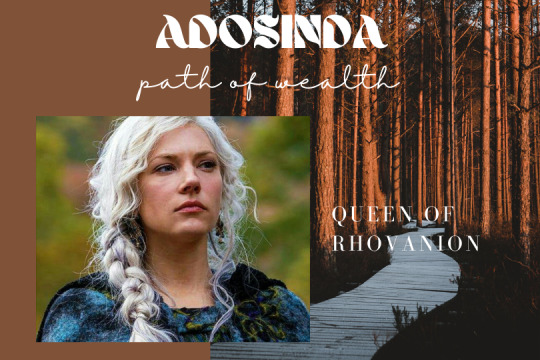



men of middle-earth ♞ house of éorl ♞ headcanon disclaimer
Vidugavia was a leader of the Northmen who styled himself the King of Rhovanion. He ruled the lands between Mirkwood and the River Running, and renewed his people’s historic alliance with the kingdom of Gondor. He aided Prince Minalcar Rómendacil II in his campaign against the Easterlings and welcomed him and his young son Valacar into his court as ambassadors after the war.
Valacar grew to manhood among the Woodsmen, raised alongside Vidugavia’s children. Vidugavia’s queen, Adosinda, doted on the young man and encouraged his close friendship with her son Viduwulfila. In time Valacar grew to love Adosinda’s daughter Vidumavi, and they were wed in a union that solidified the alliance between Gondor and Rhovanion through marriage.
Vidumavi bore Valacar a son, Vinitharya, in Rhovanion. When it came time for Rómendacil to ascend to the throne of Gondor, Valacar took his family to Osgiliath, where his wife took the name Galadwen and his son became known as Eldacar. The people of Gondor appreciated Galadwen’s fairness and nobleness, but feared that she would pass her short lifespan to her son. This distrust of the blood of outsiders led to the Kin-strife when Eldacar was poised to become King, but Galadwen Vidumavi died before even her husband’s reign.
In Rhovanion, Viduwulfila eventually inherited his father’s rule, though in future generations his descendants would lose their power and influence in the Northlands. Nonetheless, Viduwulfila was counted as a forefather of the Rohirrim, as he was an ancestor of Marhari who would father Marhwini, the first Lord of the Éothéod.
#tolkienedit#oneringnet#silmarillion#lotr#rhovanion#vidugavia#vidugavia's wife#oc adosinda#oc viduwulfila#vidumavi#galadwen#vidumavi galadwen#valacar#my edit#my writing#edit writing#headcanons#tefain nin#men of middle earth#house of eorl
63 notes
·
View notes
Photo


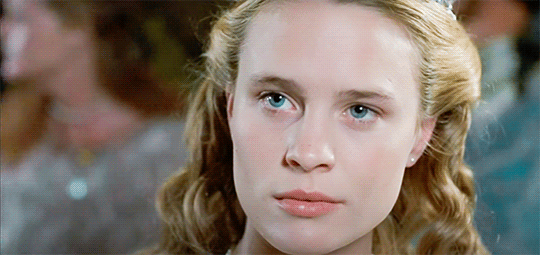



Galadwen of Rhovanion | Women of Arda - Ladies of Gondor | Part 2 of 6
Galadwen of Rhovanion was born Vidumavi, the daughter of King Vidugavia of Rhovanion. Vidugavia was one of the most powerful leaders of the various groups of Northmen that lived between Mirkwood, then the Greenwood, and the River Running and assisted Gondor in fighting the Easterlings. Her names in Sindarin and Gothic both mean “wood-maiden”.
In T.A 1250, King Rómendacil sent his son, Valacar, to Rhovanion in order to learn more about the court of Vidugavia. It was then that Vidumavi met and married him. They lived in her homeland and had a child, Vinitharya, in T.A 1255. Her son would later be known as Eldacar.
In T.A 1260, they returned to Gondor. There, many disapproved of Valacar’s choice in wife, as they feared that the blood of the ‘middle men’ would lessen the long life span of the Dúnedain. This discontent and unrest would eventually lead to a civil war, known as the Kinstrife, once Eldacar assumed the throne.
Vidumavi eventually died in T.A 1344, at a great age for her people.
#lotr#vidumavi#galadwen#lotredit#tolkien#tolkienedit#tolkien legendarium#gondor#middle earth#fancast: robin wright in the princess bride#womenofgondor#myedit#mine#womenofardaproject
105 notes
·
View notes
Photo

But Valacar far exceeded his father's designs. He grew to love the Northern lands and people, and he married Vidumavi, daughter of Vidugavia.
Vidumavi moodboard
Legendarium Ladies April: (29/30)
‘The Lord of the Rings’ characters: (37/?)
Characters’ moodboards: (346/?)
#vidumavi#galadwen#legendarium ladies april#legendariumladiesapril#lotredit#lotr characters#lotr aesthetic#lotr moodboard#characters#vidumavi aesthetic#vidumavi moodboard#j.r.r. tolkien#aesthetic#moodboard#mine
59 notes
·
View notes
Text
Today is one of those “let’s think about Tolkien’s weird obsession with Second-of-his-name trope” days.
Because really, I still don’t know why but nearly half of Tolkien’s heroes, or characters of particular relevance to the plot/history of Middle-Earth are the second guys to wear that name.
I mean,the most glaring exemple is Aragorn who is actually Aragorn II, son of Arathorn, you guessed it, II. And in Gondor you have Denethor II, son of Ecthelion II. Also fun fact, had Boromir been a Ruling Steward, he would have been called Boromir II. (Unrelated, but Boromir the first was a bit of a badass, and one of my favorite obscure characters). Thorin Oakenshield? Thorin the fucking second. And so is his cousin, Dain II Ironfoot.
So I decided to sit down, reread LOTR’s appendices and see where that trend goes.
So hereby is the (maybe not exhaustive list) of all the characters that wear the number II behind their names.
Kings of Arnor and Chieftain of the Dunedain
Argeleg II and Arveleg II, no, they’re not father and son. Kings of the Arthedain. There’s nothing else about them, except that during Argeleb’s reign, there was the great plague of the Third Age, so that puts him above most of the other kings for relevance.
Arahad II: chieftain of the Dunedain
Arathorn II: aka Gilraen’s husband
Aragorn II, son of Arathorn, Heir of Isildur
Interestingly, Arvedui, while an important figure, is the first and last of his name, but then again, I guess you can’t have two kings called “The Last One”.
Kings of Gondor
Atanatar Alcarin, “The Glorious”, whose reign represents the summit of Gondor’s power. Guess what? He was Atanatar II
Romendacil II: okay this one is an interesting one, and one of my obscure faves. (Seriously, Gondor’s history is fascinating). Seemingly one the great kings Gondor had. Per ROTK, Appendix A he “was a man of great vigour, and in 1240 Narmacil, to rid himself of all cares, made him Regent of the realm.” Interesting because he’s the first and last Regent, Gondor apparently had. A sort of proto-Stewardship? Why was the title not used after that? But anyway, guy ruled Gondor, in his uncle’s, then father’s and finally in his own name. Also first one to reach out toward the Northmen, to conclude alliances with them. Invited some Northmen to serve in Gondor’s armed forces. Send his son and heir to Vidugavia’s court. So generally open-minded. Good captain, crushed the Easterlings. Also built the pillars of the Argonath. On the downside, his policy concerning the Northmen led to the Kin-Strife.
Hyarmendacil II and Narmacil II : unremarkable
Eärnil II : penultimate King of Gondor. Also one the greats. See the pattern, yet?
Stewards
Belecthor II : under his office, the White Tree died.
Turin II : built Henneth Annun
Ecthelion II, Denethor II, and Boromir would-have-been-II
Durin’s Line
Technically there has been a Durin II, however, nothing is said about him. We know Durin III was given one of the Seven Rings, by Celebrimbor, and Durin VI awoke the Balrog in the Moria.
Nain II : only thing we know is that his son, Dain I, was killed by a dragon.
And then come-on Tolkien, it’s getting ridiculous
Thrain II : died in Dol Guldur,
his son Thorin II Oakenshield
Dain II Ironfoot, who ends up King under the Mountain.
Interestingly enough, all Kings of Rohan have a unique name.
Same goes for the Kings of Numenor, except that there are two Amandil and Elendil, who bookend the Numenor era.
Tar Amandil, second ruling King of Numenor and his son Tar Elendil.
And then we have the Lords of Andunië, Amandil and his son Elendil, who then becomes the first High King of the Numenoreans in exile. Both are descendants of Tar Amandil and Tar Elendil, through Elendil’s daughter, Silmariën.
Also there’s King Bard II of Dale, succeeds his father during the War of the Ring.
#lotr#good ol jirt#tolkien and his weird obsessions#third age#gondor#arnor#denethor#boromir#aragorn#dain ii ironfoot#thorin oakenshield
37 notes
·
View notes
Photo
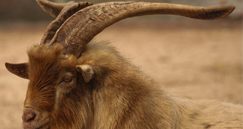


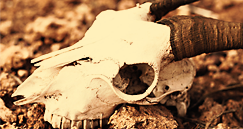



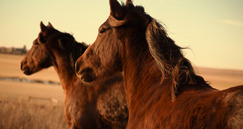
RHÛN REGIONS MOODBOARDS - [II] Sagathavuld
Sagathavuld in southwestern Rhûn was the tribal realm of the Sagath-Easterlings.
The Sagath were an Easterling Tribe on the eastern Borders of Rhovanion. Sometimes also the Brygath of southern Rhûn were called "the Southern Sagath".
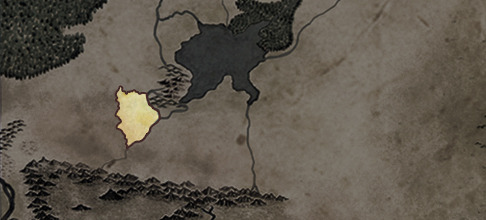
In the Ulgathic tongues, the word Sagath means "Raiding People". The actual collection of tribes which call themselves Sagath is limited to those in Rhovanion and southern Rhûn who still trace their ancestry back to the Szreldorn survivors of the Battle of Dagorlad. These tribes exist mostly in central and northern Rhovanion, though there are still scattered bands who prowl the plains west of Buhr Armenrik. These Sagath lead a life of mayhem, stealing what they need or desire from their neighbors and the caravans that still cross the open plains. Theirs is the most mobile culture in Rhûn, for they lay no legitimate claim to any of the lands they traverse. Instead, the bands are always on the move, keeping all of their posessions in the great wagons for which they are known. The Sagath are a male dominated society. Women hold no social standing except between themselves, and have no sayin the movements or actions of the band. A Sagath band normally consists of several dominant male warriors who vie constantly for prestige among their peers. Power within the band is a constant test of strength, which has sometimes led a Sagath band to destroy itself. This greatly inhibits their ability to organize themselves into a fighting force to challenge the sedentary peoples of Rhûn, though there are a few notable exceptions to this rule. The Hûz (formerly Hos) clan is an example of a succession of Sagath warlords who have consistently been able to dominate their peers and vie for real power in Rhovanion. The Hos clan was founded in the opening days of the Third Age by a member of the Szreldorn family who once owned the lands upon which Ilanin sits. Subsequent warlords in the tribe's history have used this extra evidence of legitimacy to maximum advantage. Beyond those who consider themselves Sagath, there are many other tribes in all corners of Rhûn who are called Sagath by others. Particularly warlike bands of Logath, Urgath, and especially Brygath are all named Sagath by their neighbors. In most areas of Rhûn, the term simply connotes an aggressive band who is prone to take from their neighbors what they cannot make of buy for themselves. This has led to a great deal of confusion for visitors to Rhûn. Vidugavia and Minalcar made the mistake of asking the question, "Where are the Sagath?" Any tribe, when posed this question, is libel to point out the biggest rival. This led the western army, in their ignorance, to commit grievous mistakes in southern Rhûn and to alienate most of its residents.
The remaining Sagath allied themselves -or were subjugated by - the Kings of Mistrand and became part of the Igath or Wainriders.
After the fall of the Wainrider empire the term Sagath appeared on and off as a denomination for plundering or renegade easterling tribes as a dialect term in the local Westron dialects of Rhûn, however these later "Sagath" had mostly little to do with the original tribal confederation of Urgathic and Szreldorn descent.
#my edits#rhun moodboards#tolkienedit#lotredit#sagathavuld#sagath#rhun#rhûn#easterling#easterlings#khand#variags#rhovanion#dorwinion#wainriders#balchoth#tolkien#the lord of the rings
119 notes
·
View notes
Note
my name may not be neville but I can put something long in your bottom
pick-up line: 1000/10 BEST ONE SO FAR BAHAHAURL: idgi sorry :( /10icon: 7/10theme: 8/10overall: 7.5/10
BLOGRATES (blacklist “blograte” if you don’t want these on your dash)
2 notes
·
View notes
Photo
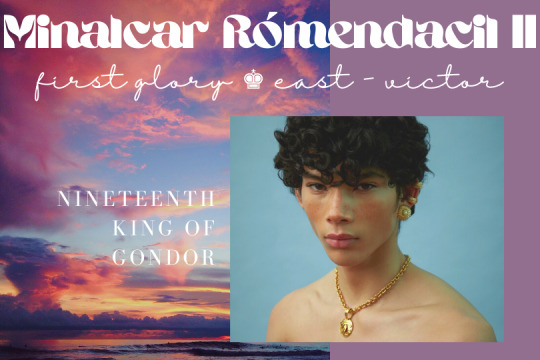




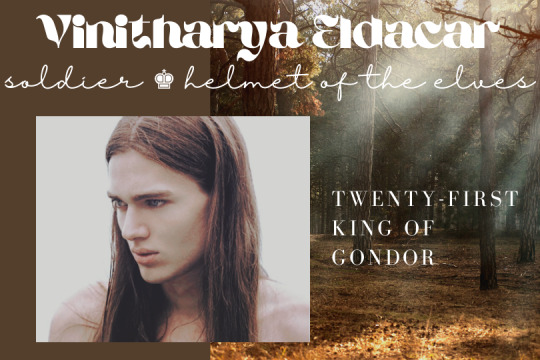
the line of elros ♚ royalty of gondor ♚ headcanon disclaimer
Minalcar was the elder son of Calmacil, and unlike his forefathers he was a vigorous man eager to prove his worth. His uncle Narmacil I recognized his strength and appointed him the Regent of Gondor so Minalcar might rule in his stead, as he had little interest in politics. As Regent, Minalcar turned his attention to the North and East, where there were stirrings of rebellion among both the conquered Easterlings and Gondor’s sometime-allies the Northmen. With the aid of the Woodsmen of Rhovanion, Minalcar defeated invaders from the East and ensured the loyalty of the northern people. Minalcar returned home having taken the name Rómendacil after King Rómendacil I, another warrior who had defeated the Easterlings. At this time he married Calamistë, an archivist in the Library of Gondor; together they had a son, Valacar.
Without war to occupy him, Rómendacil focused on the affairs of the capital, making King Narmacil nervous he would seek to supplant him, though no such thought crossed Rómendacil’s mind. While Valacar was still a child, Narmacil sent Rómendacil and his family north again to reaffirm Gondor’s alliance with Rhovanion. Valacar grew to manhood among the Woodsmen, raised alongside King Vidugavia’s children, and eventually marrying his daughter Vidumavi. As well as integrating many Northmen into Gondor’s army and solidifying their alliance through marriage, Rómendacil and Valacar fortified the western shores of the Anduin and built the Pillars of the Argonath above Nen Hithoel.
It was not until Narmacil’s death that Rómendacil returned to Gondor permanently. His father Calmacil was crowned king, but as he was already old and had always been indolent like his brother, Rómendacil kept his position as Regent. Upon Calmacil’s own death ten years later, Minalcar was finally crowned King Rómendacil II after sixty-four years of ruling as Regent.
Soon Rómendacil called his son back to Gondor as well, for as his heir he believed Valacar ought to take an active part in governance. By this time, Vidumavi had borne Valacar a son, named Vinitharya after the fashion of his mother’s people. The court of Gondor, consisting almost entirely of “high men” descended from the Númenóreans, were displeased with Valacar’s decision to wed a woman of a “lesser” race, especially when Vidumavi grew old and died much younger than a woman of the Dúnedain might have. Nevertheless, when Valacar inherited his father’s throne he named Vinitharya, now called Eldacar, his heir, though this would not be the end of the resistance against the Woodswoman’s son.
#tolkienedit#oneringnet#lotr#silmarillion#gondor#minalcar romendacil ii#romendacil ii#romendacil ii's wife#oc calamiste#valacar#vidugavia#vidumavi#eldacar#my edit#my writing#edit writing#headcanons#tefain nin#line of elros#royalty of gondor
41 notes
·
View notes
Photo

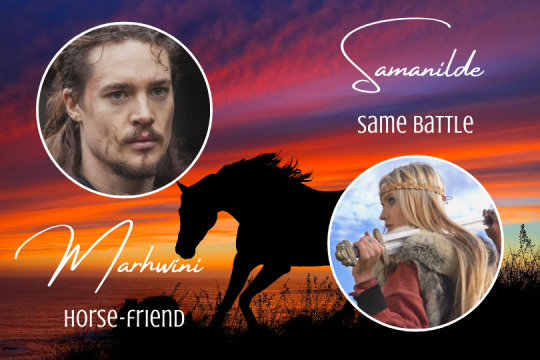




men of middle-earth ♞ house of éorl ♞ headcanon disclaimer
Marhari was a Lord of the Northmen of Rhovanion, a descendant of King Vidugavia, who had flourished 500 years earlier. During his rule, a confederacy of warriors from the East, called the Wainriders, assaulted Gondor and the North. King Narmacil II of Gondor rallied his soldiers and called upon the Northmen, his nation’s ancient allies, to fight against the chariot-mounted warriors. Marhari led his folk to battle against their foe, but the threat was greater than they knew: Narmacil was slain, and Marhari fell in his rearguard. The Battle of the Plains was lost, and much of Rhovanion was overrun and its people conquered.
Erelieva, the wife of Marhari, fought by his side and led the remnant of their warriors from the battlefield. She was grievously wounded in their retreat, surviving only long enough to ensure the safety of her people and pass leadership to her son Marhwini, who gathered a remnant of the Northmen and led them westward in search of freedom. The refugees wandered until they reached the untamed land between the River Anduin and the forest of Mirkwood, where Marhwini halted their journey. There he wed the warrior Samanilde, and they took the mantle of Lord and Lady of the Éothéod, the horse-people, for they loved and revered their mighty steeds.
The Éothéod lived a wary life in the Vales of Anduin, aware of the fragility of their peace. At last their respite ended when Lady Samanilde was captured by a chief of the Wainriders and slain in Marhwini’s rescue attempt. From this tragedy, Marhwini learned of the Wainriders’ plot to raid Calenardhon, and of his enslaved kin’s preparations for revolt. Swiftly, he sent a message to King Calimehtar of Gondor, warning him of the enemy’s plans and offering the aid of his people and their allies. Calimehtar swiftly planned an attack luring the Wainriders to the Dagolrad, where horsemen of Gondor and an éored of mounted Northmen lay waiting. The ambush was an overwhelming victory, freeing the Éothéod and their allies from the trials of war for forty-five years.
But troubles returned during the rule of Marhwini’s son Forthwini, who discovered that the Wainriders plotted to revenge themselves upon Gondor at the same time as the Haradrim attacked. Forthwini warned King Ondoher of their approach and offered aid to their allies of old. When the time came, Forthwini was too aged to ride to war himself, especially as he grieved the recent death of his wife Cunihilda, so instead he sent his son Marhswinthi to strengthen Gondor’s troops. The battle soon turned ill with the deaths of Ondoher and his elder son Artamir, and Marhswinthi retreated into the Dead Marshes. He rescued a wounded soldier on his way, but the lad died in his arms, and upon searching his body Marhswinthi discovered he held no other than Faramir, the younger prince of Gondor; he was forced to bear this ill news to Minohtar, the dead King’s nephew, and as a result Minohtar faltered and was himself slain.
Yet Marhswinthi survived, returning to the Vales of Anduin to marry his sweetheart Dawfled, a wise woman who warned their son, Frumgar, that this home was too dangerous for the Éothéod to remain there forever. Frumgar came of age with that foreboding heavy in his heart and looked to his wife Sunngifu for hope. Yet shortly after she bore him a son, Fram, Sunngifu was slain in an orc raid, and amid his mourning Frumgar knew it was time to leave. The Kingdom of Angmar had recently been destroyed, freeing up land to the north, and so Frumgar led the Éothéod to the land between the rivers Greylin and Langwell in the hope that there they could find peace.
Alas, they faced a different kind of trouble at the feet of the Grey Mountains, where they were troubled by the dragon Scatha. Frumgar was killed by Scatha, and his son Fram swore revenge against the beast. First, however, he needed to ensure the safety and prosperity of his people, and he spent many years fortifying the first city of the Éothéod, named Framsburg in his honor. When at last he felt secure in Framsburg’s defenses, he and his wife Adgith set out to conquer the monster who killed Frumgar.
The battle of Scatha and Fram was long and terrible, but in the end Fram slew his foe with the aid of Adgith. Together they claimed the dragon’s hoard and returned to Framsburg in victory. But the dwarves of that region also laid claim to the treasure, as Scatha had pillaged it from their ancestral halls. Fram rebuked their demands, instead sending them the dragon’s teeth along with the message, “Jewels such as these you will not match in your treasuries, for they are hard to come by.” This rebuke angered the dwarves, and the Éothéod believe that Fram’s death ten years later on a hunting trip was orchestrated by Dagmar, the dwarvish leader at the time.
#tolkienedit#oneringnet#lotr#marhari#oc erelieva#marhwini#oc samanilde#forthwini#oc cunihilda#oc marhswinthi#oc dawfled#frumgar#oc sunngifu#fram#oc adgith#my edit#headcanons#tefain nin#men of middle earth#house of eorl
27 notes
·
View notes
Text
Men of Middle-earth Edit Series: Appendix A
PEOPLES OF ARDA
Line of Elros
Three Houses of the Edain
Men of Middle-earth (you are here!)
Elves of Arda (work in progress)
Dwarves of Middle-earth (work in progress)
~~~
This edit series is a continuation of my Three Houses of the Edain edit series, now falling under the larger umbrella of a Peoples of Arda edit series (we’ll see how far I get, though). These appendices are meant to provide demystifying information about distinctions between canon and my headcanon, as well as providing an index of links to each edit.
I have linked to the Tolkien Gateway articles for each canon (named) character so you can do your own research on them. For OCs, I have linked to my personal tag for each OC.
My OC names are made with help from RealElvish.net and Parf Edhellen. If a canonical name is not given a translation, I try my best to make my own translation; sometimes I have to make things up entirely, but I will always indicate when that is the case. If I use another source to find names, I will link that source also.
~~~
TABLE OF CONTENTS
~~~
Appendix A: House of Éorl (you are here!)
Appendix B: Misc. Númenóreans, Misc. Dúnedain
Appendix C: Middle Men, Northmen
Appendix D: Easterlings, Southrons, Nazgûl, The Lost Road, Misc. Men
~~~
HOUSE OF ÉORL
I originally thought to include the House of Éorl as part of the Line of Elros, since Éorl’s later descendants married into the Line of Elros, but after further reflection and my decision to expand this series I recategorized them here instead.
Note: Tolkien used Gothic names for the pre-Rohirric Northmen and Old English names for the Rohirrim. I have followed this pattern. The Gothic names for OCs are taken from this website; the Old English names are taken from RealElvish. I’ve also added a diacritic to the first letter of Éorl, solely for aesthetic purposes. Don’t @ me :p
~~~
Vidugavia
ft. Vidugavia, Adosinda (OC), Viduwulfila (OC), Vidumavi, Valacar
This is mostly canon, though as I mentioned in the notes about Rómendacil II I’ve fudged some of the timelines regarding the Gondorian royalty for story purposes. We know nothing about Vidugavia’s other child(ren), but as he was an ancestor of Marhari we do know he had at least one child other than Vidumavi.
Marhari
ft. Marhari, Erelieva (OC), Marhwini, Samanilde (OC), Forthwini, Cunihilda (OC), Marhswinthi (OC), Dawfled (OC), Frumgar, Sunngifu (OC), Fram, Adgith (OC)
Marhari and Marhwini’s stories are canon, though the details about their wives are not. Forthwini did warn Ondoher of the Wainriders’ attack, but we don’t know whether he participated in the Disaster of the Morannon. The Lord of the Éothéod between Forthwini and Frumgar is unnamed, but a character known only as the “Leader of the Éothéod” was a leader in that battle (Christopher Tolkien said his name began with Marh- but was illegible after that); I think it’s very reasonable to assume he was Forthwini’s son and heir. The deeds of that leader are canon up until he delivered news of Faramir’s death to Minohtar. Frumgar did move his people from the Vales of Anduin to the north; the detail about his wife’s death is actually taken from LOTRO! Fram’s story is mostly canon, but has been embellished; I took some inspiration for his fate from LOTRO, but didn’t end up using many of the details there. Dagmar is an OC.
Léod
ft. Léod, Godliss (OC), Éorl the Young
This is mostly canon, with a bit of embellishment. As usual, everything about Godliss is headcanon.
Éorl
ft. Éorl the Young, Lisswyn (OC), Éomund of the Éothéod, Brego, Meregith (OC), Baldor, Aldor the Old, Éofor
The basics of these stories are canon, such as Éorl’s rescue of Gondor, the Oath, and Baldor’s demise. However, they have all been embellished, especially with regard to the emphasis on the Oaths being sworn to Eru (like marriage vows for elves, like the Oath of Fëanor). The Oath of Círion was indeed sworn in Eru���s name; we don’t know about the Oath of the King of the Dead, but I think it’s a reasonable and thematically resonant thread to connect. Hallas did name Rohan (and “Rohirrim”) but most of the rest about him is headcanon. The identities and deeds of the Princes of Dol Amroth are mostly headcanon. This Éomund did witness the Oath-swearing, but I made up everything else about him. The manner of Brego’s death is canon, though taken from an older draft that didn’t make its way into LOTR as it was published. Poor Éofor gets neglected, but hey, not appearing in the story means you're doing a good job, don’t you think?
Aldor
ft. Aldor the Old, Swetelayu (OC), Wynfled (OC), Rosefled (OC), Léofled (OC), Fréa
This is mostly canon. Aldor did have three daughters before Fréa was born (the same year he became king), but we don’t know the names/crafts/etc. of them or his wife; that’s all my headcanon.
Fréa
ft. Fréa, Burnhild (OC), Fréawine, Bledswith (OC), Goldwine, Grimwine (OC)
There aren’t many details about Fréa, Fréawine, or Goldwine, but what is here is canon. The stuff about their wives is made up. Fréawine is implied to have had other children, as later Freca will claim descent from him; I came up with Grimwine to fill in that gap.
Goldwine
ft. Goldwine, Trewred (OC), Déor, Estmund (OC), Gram
This is mostly canon, though the bits about Trewred and Estmund are headcanon.
Gram
ft. Gram, Cwendar (OC), Helm Hammerhand, Hild
The details about Gram are canon, but Cwendar’s story is my invention. Helm was a warrior, as will be seen, but we don’t know much about Hild. Since her name means “battle,” though, I can easily imagine her as a shieldmaiden.
Helm Hammerhand
ft. Helm Hammerhand, Gledhild (OC), Saulwyn (OC), Haleth Helmsson, Háma Helmsson
The basics of Helm’s story are canon, but have been embellished. I don’t think it’s explicitly canon that Edoras was attacked while Helm was already in battle at the Isen, but I didn’t know how else to make sense of those things both being counted as the beginning of the invasion. The details of Haleth and Háma’s deaths are canon; everything about Gledhild is made up; Helm’s death is entirely canon. Helm did have a daughter whose hand was sought by Wulf, but I’ve made up everything else about her. I think it’s reasonable she may have been aroace, given that she remained unwed and yet appears to be older than her brothers and presumably of a similar age to her cousin Fréaláf (who I’ve given the original name Ethelward; see his edit for more details), who was in his 30s at the time of Wulf’s Rebellion. The thing about Helm’s wraith still haunting the Deep is a canonical rumor, but I added in Saulwyn’s involvement.
Freca
ft. Freca, Runwise (OC), Wulf
Most of Freca’s story is canon; everything about Runwise is made up. Wulf’s story is tied up with Helm’s (see above), and is firmly based in canon, though I’ve embellished things a bit.
Hild
ft. Hild, Wulfstan (OC), Ethelward Fréaláf Hildeson
We know nothing about Hild aside from her name and place in the family tree; every other detail about her is my headcanon. Most of Fréaláf’s deeds are canon, though I’ve made room for his mother to also play an active part in overthrowing Wulf. Since Fréaláf means “surviving lord,” I’m assuming that was a name taken after Helm and his heirs were killed, and I’ve given him a different birth name, Ethelward.
Fréaláf
ft. Ethelward Fréaláf Hildeson, Aldwyn (OC), Brytta Léofa, Eafled (OC), Walda, Mildgith (OC), Folca, Darwise (OC)
Most of this is canon, though I’ve elaborated on many details. Brytta’s second name was indeed Léofa, but we don’t know the exact origins of how that came about. Everything about the Queens of Rohan is headcanon.
Folcwine
ft. Folcwine, Cynefled (OC), Folcred, Fastred, Layrun (OC), Fengel
This is mostly canon, though I made up everything about Layrun (though Folcwine did canonically have an unnamed daughter) and I also postulated that Folcwine became ineffective after the deaths of F&F.
Fengel
ft. Fengel, Bledwyn (OC), Wilfled (OC), Cwenswith (OC), Thengel
These events are based in canon (Fengel was canonically greedy, Thengel canonically quarreled with his father and left for Gondor when young), but have been much embellished. See the previous edit for details on the canonicity of Fengel’s childhood. He did have two (unnamed) daughters; I’ve made up everything about them, and about his wife.
Thengel
ft. Thengel, Morwen Steelsheen, Frithild (OC), Théoden, Mereliss (OC), Shadufled (OC), Théodwyn
This is mostly canon. In canon, Thengel had three unnamed daughters as well as Théoden and Théodwyn (and the birth order I present here is canon, too), but I gave them names and changed the second-to-last kid to be genderfluid. Shoutout to Aragorn (Thorongil) for being a trans ally—what a great use of foresight, to see that a baby’s gonna be genderqueer and help their parents figure out what to do about that :) Tolkien Gateway says that Thengel and his heirs did not speak Rohirric, but that’s just absurd, so I altered that bit.
Théoden
ft. Théoden, Elfhild, Théodred
This is pretty much entirely canon, with only slight embellishments (mostly regarding Elfhild).
Théodwyn
ft. Théodwyn, Éomund, Éomer, Éowyn
Again, this is almost all canon.
Éomer
ft. Éomer, Lothíriel, Elfwine
This is all canon except for most of the stuff about Elfwine—he did canonically take after Imrahil, but the bits about making peace with the Dunlendings is a headcanon, as is the callback to poor old Karsalimir of Dol Amroth.
~~~
CONTINUED IN APPENDIX B
#men of middle earth#peoples of arda#house of eorl#rohan#rhovanion#my meta#tefain nin#mome appendecies
4 notes
·
View notes
Text
Line of Elros Edit Series: Appendix C
Continued from Appendix B. This section will contain information on the Royalty of Gondor.
~~~
TABLE OF CONTENTS
Appendix A: Royalty of Númenor
Appendix B: House of Andúnië, Royalty of Arnor
Appendix C: Royalty of Gondor (you are here!)
Appendix D: Princes of Dol Amroth, Chieftains of the Dúnedain
Appendix E: Stewards of Gondor
~~~
ROYALTY OF GONDOR
Anárion
ft. Anárion, Elennúmen (OC), Ringelenë (OC), Almameldë (OC), Aspenindë (OC), Meneldil
Anárion’s story is canon, though the details about his spouse and daughters are all headcanon. Anárion is said to have had four children, with Meneldil being the youngest, which is odd to me because Meneldil was the last man born in Númenor...but also he and his older siblings are all older than Isildur’s kids except for Elendur? Whatever. Maybe Anárion’s implied daughters were triplets or something. And Isildur’s dry spell of kids is kind of weird on its own.
Meneldil
ft. Meneldil, Nyellelírë (OC), Cemendur of Gondor, Tinweriel (OC), Eärendil of Gondor, Aldalótë (OC), Anardil of Gondor, Elquassë (OC)
We don’t actually know what Meneldil did during the War of the Last Alliance. Meneldil’s reaction to Isildur’s departure is canon, but has been embellished. We don’t know anything about Cemendur, Eärendil, or Anardil beyond their names; everything else about them is headcanon. “Atalantë” is another name for the event more commonly known as the Akallabêth.
ETA 4/1/21: Fixed a minor timeline error.
Ostoher
ft. Ostoher, Haldanárië (OC), Tarostar Rómendacil I, Ravandië (OC), Turambar of Gondor, Culindë (OC), Atanatar I, Rátavanië (OC)
Ostoher did indeed remodel Minas Anor and turn it into his summer home, but his reasons why are a headcanon. Most of Rómendacil’s story is canon, though I made up the identity of his steward (you’ll see him again later in the series); for information on the Tradition of Isildur, see this article in the Encyclopedia of Arda. Turambar’s life is likewise mostly canon, though like his father’s story it’s been embellished here and there. Atanatar’s life is entirely headcanon.
Siriondil
ft. King Siriondil, Ilvanya (OC), Tarannon Falastur, Zâinazimril Berúthiel, Círyan
Everything about Siriondil is headcanon. Tarannon and Berúthiel’s story is canon at its roots, but has been spun to make Berúthiel much more sympathetic. Herumor is a real Black Númenórean from the end of the Second Age, but there’s no proof he was related to Berúthiel, nor that Berúthiel came specifically from Rhûn Harad; we only know that she was a Black Númenórean. Her Adûnaic name is my own creation, and her story has been greatly embellished.
ETA 9/9/21: Changed Rhûn to Harad in order to better fit Herumor’s backstory.
Tarcíryan
ft. Tarcíryan, Láminë (OC), Eärnil I, Tyelcatálië (OC), Círyandil, Netyariel (OC), Círyaher Hyarmendacil I, Ilwiel Rilyasicil (OC)
Tarcíryan adding the Tar- to his birth name is headcanon, as is his position as Captain of the Hosts and the manner of his death. (I’ve also decided to add the accented í to all names that include the element cír, “ship,” as it appears in the name Círdan, just because I think it looks nice. The only one I missed was Tar-Círyatan, as I made that decision after his edit was posted.) Eärnil’s story is mostly canon, though the bit about his death being arranged by the lords of Umbar is headcanon. Umbar’s origins as a conquered city are strongly implied but not explicitly canon. Círyandil’s life is entirely canon. Círyaher’s story is mostly canon, though I gave some credit for his accomplishments to his wife, and a few details have been embellished. The bit about Celebrindor of Arnor is headcanon. And of course, all details about the OC wives are my own creation.
Atanatar II
ft. Atanatar II Alcarin, Míriën (OC), Narmacil I, Calmacil
We don’t know if Atanatar was an only child or not, I made that decision. Most of his story is canon, with a few embellishments. It’s not impossible that Narmacil was married, but he canonically had no children, so I decided to make him aroace. Narmacil’s worries about Minalcar overthrowing him are all headcanon, but the details of the war and alliance with Rhovanion are canon.
Calmacil
ft. Calmacil, Aistárë (OC), Minalcar Rómendacil II, Calimehtar
Calmacil’s story is mostly canon, though everything relating to his wife is headcanon.
Calimehtar
ft. Calimehtar, Imbelossë (OC), Alquandilmë (OC), Serecco (OC), Castamir
Everything here is headcanon, except that Calimehtar is canonically the ancestor of Castamir.
Rómendacil II
ft. Minalcar Rómendacil II, Calamistë (OC), Valacar, Vidugavia, Vidumavi, Vinitharya Eldacar
The basic details of this one are canon (Rómendacil’s regency, Valacar’s marriage, etc), but I’ve significantly messed with the timelines; canonically, Minalcar did not go himself to Rhovanion after his military victory, instead sending Valacar (who was already grown) alone, but I liked the idea of Valacar growing up in Rhovanion so I changed things to make that work. Also, fun fact: “Vinitharya” is not pronounced as Viniþarya, but rather as Vinit-harya.
Castamir
ft. Castamir, Núriel (OC), Airesarno (OC), Ninquo (OC), Arnakhôr Angamaitë, Azgarzîr Sangahyando
The influence of his mother upon Castamir is a headcanon, as is everything about his wife. It is canonical that Castamir had sons who survived the Kin-strife, though we don’t know their names. Ornendil was canonically executed when Osgiliath fell, but Castamir performing the execution himself is an embellishment. He was canonically “haughty and ungenerous” as a king; I made up the bit about him specifically continuing executions and exiles, but it doesn’t feel like much of a stretch. We don’t know much about Castamir’s sons or their fate, but I feel that my extrapolations are based in canon. Angamaitë and Sangahyando’s Adûnaic names are my own creation, but the details of their schemes are canonical. We know they are both descended from Castamir, though not the specific details of their relationship to each other; I chose to make them grandsons of different sons of Castamir. We don’t know what their eventual fates were, but considering they would have lived during the Great Plague, I thought that was a fittingly ironic way for them to die.
Eldacar
ft. Vinitharya Eldacar, Russariel (OC), Ornendil, Aldamir
This is mostly canon, with all the headcanoned details having been covered in previous notes.
Aldamir
ft. Aldamir, Lintasímë (OC), Vinyarion Hyarmendacil II, Mittanyar (OC), Minardil
Look, sometimes ladies get to die in pointless duels, okay? I did make that up, though the rest of Aldamir’s life is canonical. I made Vinyarion trans because c’mon, a name like “new son”? He chose that when he came out. Also his spouse is nonbinary because why not! Enbies can be Captains of the Ships, too!!
Minardil
ft. Minardil, Huilindië (OC), Telemnar, Súriel (OC), Fernendil (OC), Mityaher (OC), Cucuandië (OC), Minastan, Nenyawilin (OC), Tarondor of Gondor
The circumstances of Minardil’s death are canon (and were covered earlier as well), though again everything about his wife is made up. Húrin of Emyn Arnen was indeed Minardil’s steward, and the stewards were chosen from his House after this, but the details about his role in these two succession crises are all headcanon. All we know about Telemnar in canon is that he started building a fleet to fight Umbar, but that when the Great Plague came he and “all his children” died, leaving his nephew Tarondor to inherit. Thus everything about his wife and daughter is all made up.
Tarondor of Gondor
ft. Tarondor of Gondor, Varnefindë (OC), Telumehtar Umbardacil, Elenmirwë (OC), Narmacil II, Arcíryas
Tarondor’s deeds as king are canon, as is the age of Telumehtar at the time of his inheritance, though we know nothing about the fate of his wife. Telumehtar’s deeds are likewise canon, though we don’t know the specifics about how the last descendants of Castamir were slain, just that they died in this battle.
Narmacil II
ft. Narmacil II, Alassindo (OC), King Calimehtar, Nessimë (OC), Ondoher, Lúnaduinë (OC)
Everything about Alassindo is headcanon, but Narmacil did canonically die fighting the Wainriders. Except for the details about his wife and his time governing Minas Anor before his inheritance, Calimehtar’s story is canon. We know nothing about Calimehtar’s daughter except that he had one.
Ondoher
ft. Ondoher, Lelyariel (OC), Artamir, Prince Faramir, Fíriel, Arvedui, Lúnaduinë (OC), Quildoloro (OC), Minohtar
Everything about the rivalry between Ondoher and Eärnil is headcanon. The alliance with Arnor is canon, though the details of the marriage of Arvedui and Fíriel being arranged by their mothers is headcanon. All the details about the battles are canon.
Arcíryas
ft. Arcíryas, Moicanítë (OC), Calimmacil, Lótëaloxë (OC), Prince Siriondil, Vánquassë (OC), Eärnil II, Telpinë (OC), Eärnur, Morimmacil (OC)
Save for their relations to one another, everything about Arcíryas, Calimmacil, and Siriondil is headcanon. The rivalry between this house and the Line of Kings is headcanon, but everything else about Eärnil and Eärnur is canon. Eärnur is arguably gay-coded, so I gave him a boyfriend, but that is not explicitly canonical.
~~~
CONTINUED IN APPENDIX D
#line of elros#headcanons#gondor#my meta#tefain nin#loe appendices#royalty of gondor#peoples of arda
3 notes
·
View notes